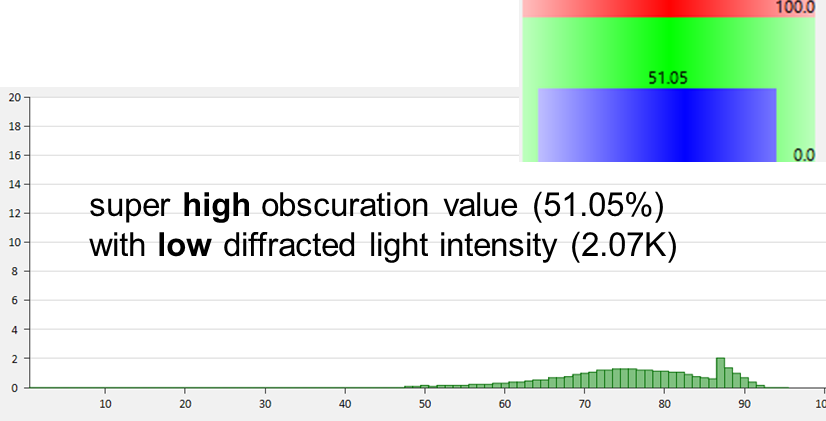Test highly light-absorbing samples (inks, paints) with laser diffraction particle size analyzer
2024-12-27Bettersizer
When analyzing highly light-absorbing samples like inks and paints using laser diffraction, it's crucial to go beyond solely relying on obscuration measurements. While obscuration provides valuable information, it can be misleading for these materials.
- The Obscuration Challenge:
Light-absorbing particles strongly attenuate the laser beam, leading to high obscuration readings. This can create a false impression of high particle concentration, as even small amounts of absorbing material can significantly reduce the transmitted light. Consequently, obscuration alone may not accurately reflect the true particle size distribution.
- Leveraging Scattered Light:
Scattered light intensity provides crucial information about particle size and distribution independent of the strong light absorption. By examining the total intensity of scattered light, you can gain insights into the particle contents even in the presence of high absorption. Always remember – a scattered light strong enough generates reliable results.
- Combining Data for Optimal Results:
Utilize both obscuration and scattered light data for a more comprehensive analysis. Correlate changes in scattered light intensity with variations in particle size and concentration. This combined approach allows for a more accurate and reliable determination of particle size distribution in highly light-absorbing samples.
- Practical Considerations:
The Bettersizer series laser diffraction particle size analyzers provide simultaneous measurement of obscuration and scattered light intensity. For highly absorbing materials, such as inks or pigments, a recommended scattered light intensity should be at least 2K units, regardless of the obscuration percentage may reach 50%.
By carefully considering both obscuration and scattered light intensity, you can overcome the challenges associated with analyzing highly light-absorbing samples and obtain more accurate and reliable particle size data.



